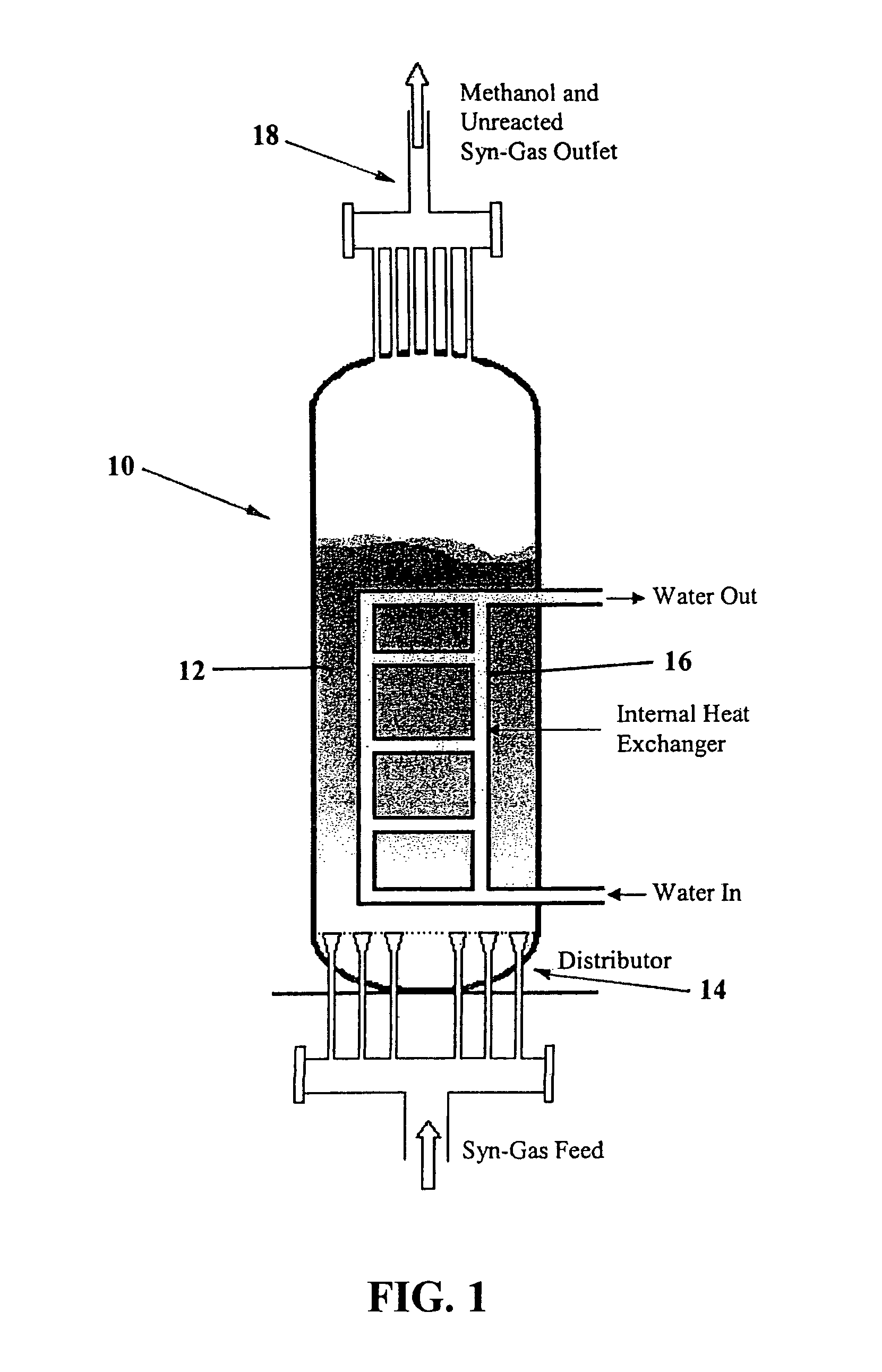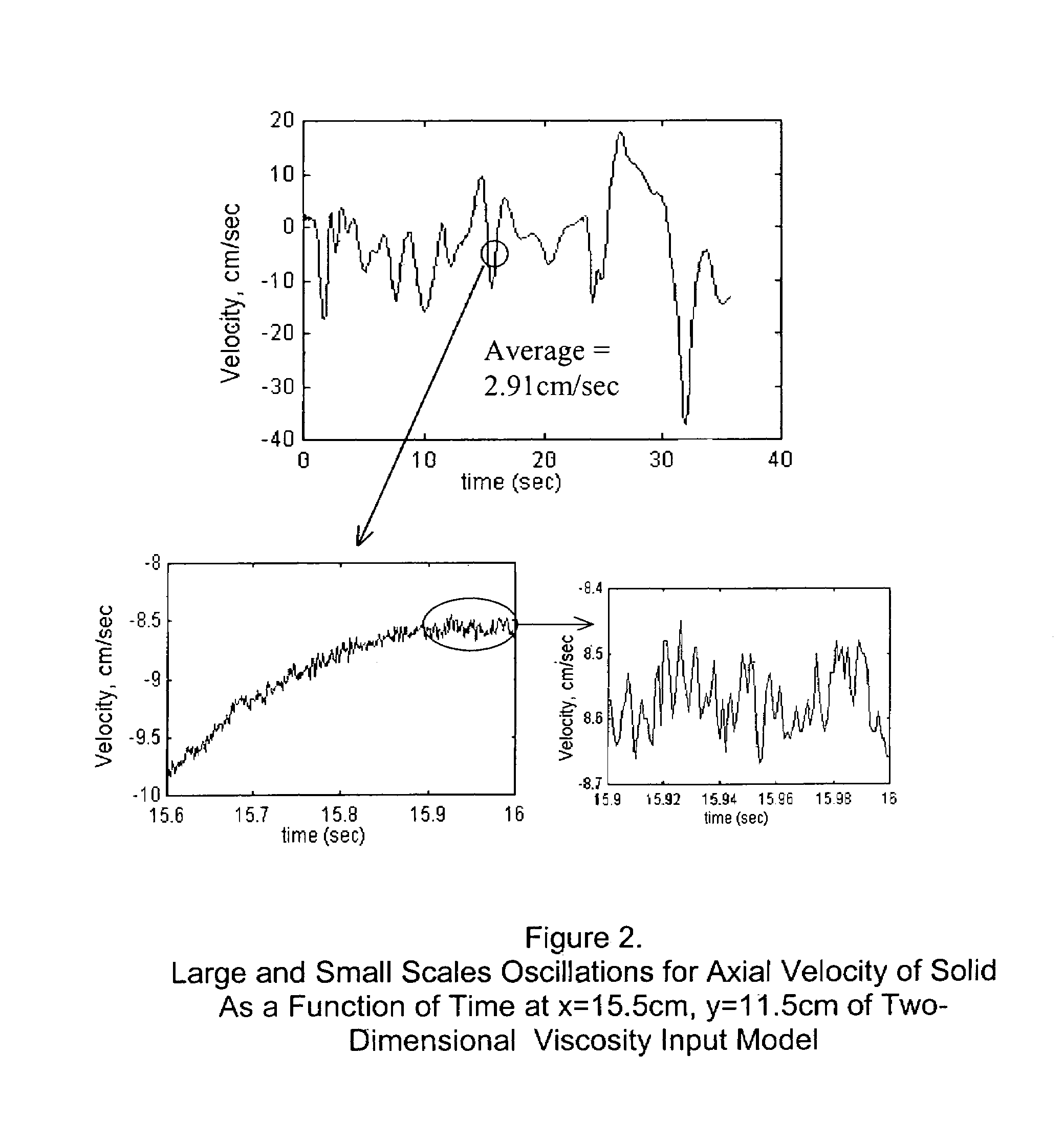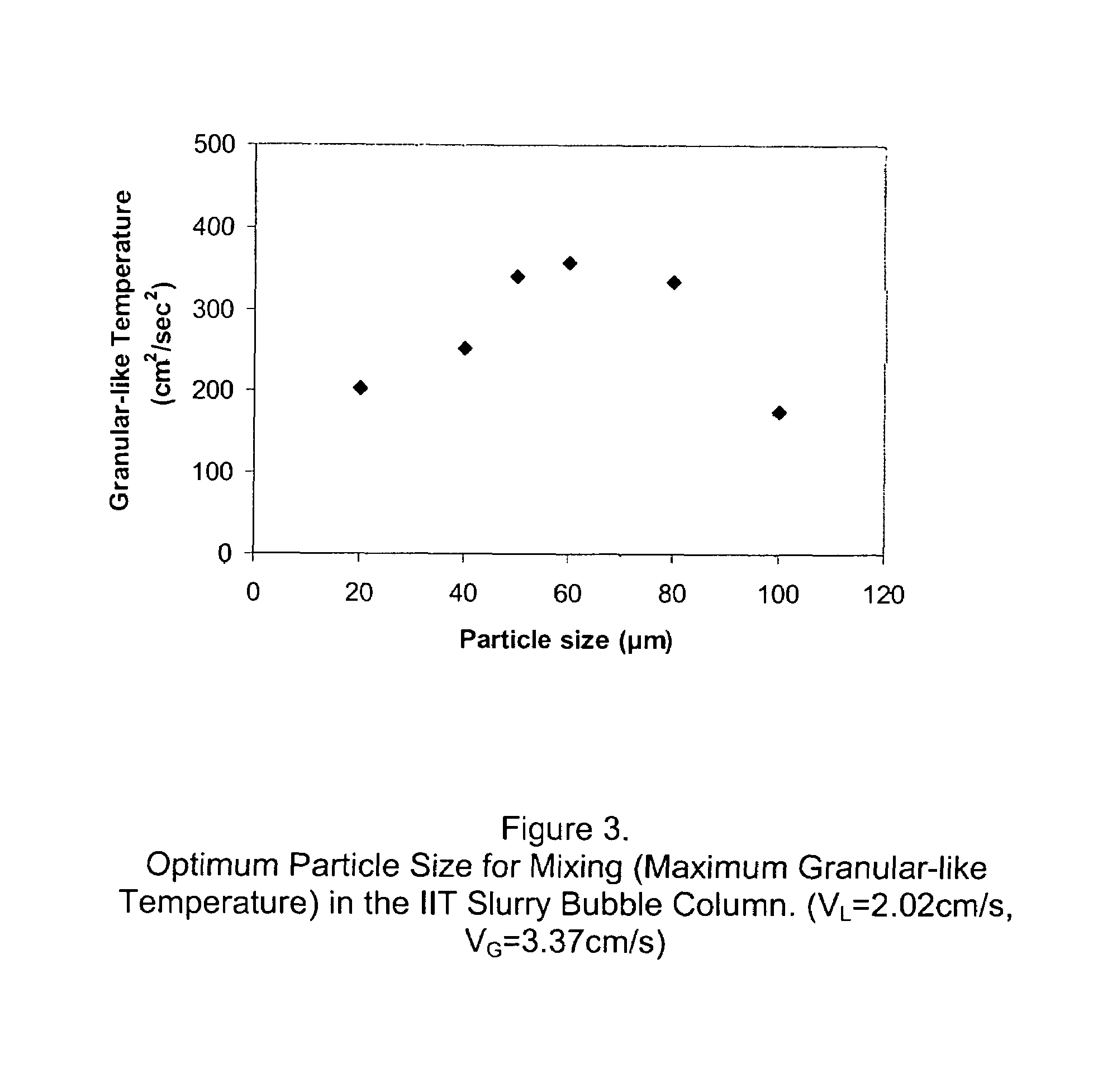Design of slurry bubble column reactors: novel technique for optimum catalyst size selection contractual origin of the invention
a technology of catalyst size, which is applied in the direction of physical/chemical process catalysts, bulk chemical production, oxygen-containing compound preparation, etc., can solve the problem that the coherent flow structure of the bubble column reactor in the churn-turbulent regime has not been computed, and the size of the catalyst used in the slurry bubble column reactor is not considered in most modeling studies. , the effect of catalyst size on the performance of the reactor
- Summary
- Abstract
- Description
- Claims
- Application Information
AI Technical Summary
Problems solved by technology
Method used
Image
Examples
Embodiment Construction
[0024]A hydrodynamic model for the production of methanol from syn-gas in the slurry bubble column reactor was developed. It uses the principles of mass, momentum and energy conservation for each phase, as described in Table 1. This model includes the complete granular temperature balance based on the kinetic theory of granular flow. The kinetic theory model and the computer code were extended to include the effect of the mass transfer coefficient between the liquid and the gas and the water gas shift reaction in the Air Products / DOE Laporte slurry bubble column reactor shown in FIG. 1. The reaction rates for methanol are all in the gas phase in previous work. Here the more realistic rate in the liquid phase is used.
[0025]The following chemical reactions occur during production of methanol from syn-gas. The reactions included are methanol production from hydrogen and CO, the water gas shift reaction, and the production of methanol from CO2-hydrogenation.
CO+2H2CH3OH
CO2+H2CO+H2O (1)
C...
PUM
| Property | Measurement | Unit |
|---|---|---|
| diameter | aaaaa | aaaaa |
| diameter | aaaaa | aaaaa |
| height | aaaaa | aaaaa |
Abstract
Description
Claims
Application Information
 Login to View More
Login to View More - R&D
- Intellectual Property
- Life Sciences
- Materials
- Tech Scout
- Unparalleled Data Quality
- Higher Quality Content
- 60% Fewer Hallucinations
Browse by: Latest US Patents, China's latest patents, Technical Efficacy Thesaurus, Application Domain, Technology Topic, Popular Technical Reports.
© 2025 PatSnap. All rights reserved.Legal|Privacy policy|Modern Slavery Act Transparency Statement|Sitemap|About US| Contact US: help@patsnap.com



